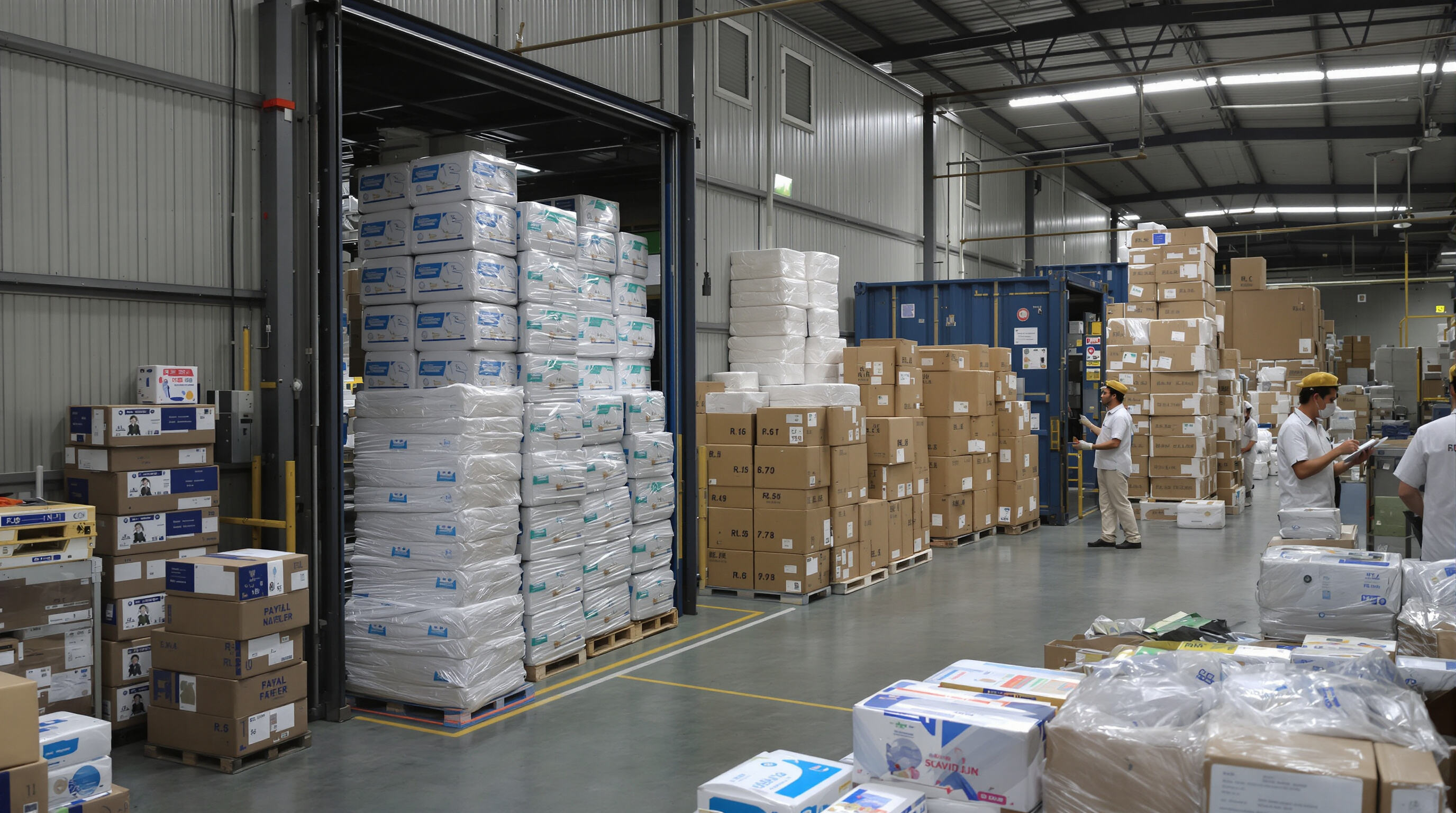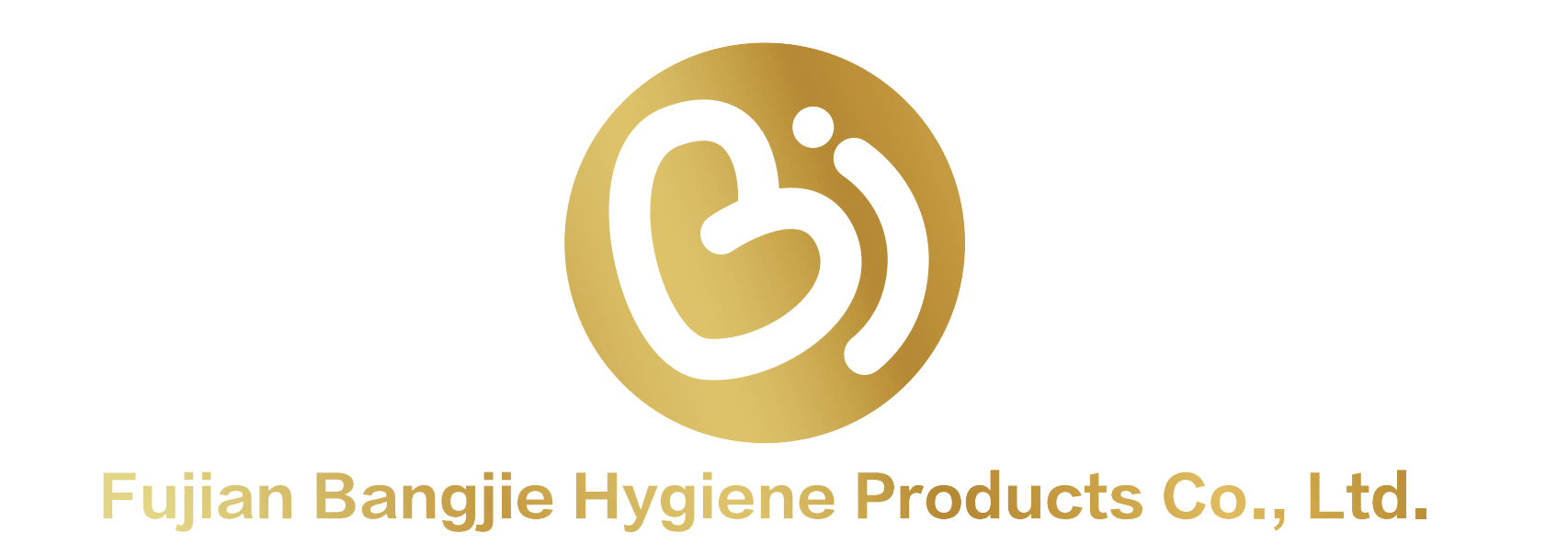Incoterms 2025-förändringar som påverkar fraktavgifter för hygienbindor med vingar
Större revideringar i Incoterms 2025 som påverkar kostnader och ansvarsförflyttningar

De senaste uppdateringarna av Incoterms 2025 inför stramare regler för vem som betalar vad när det gäller kostnader mellan köpare och säljare, särskilt viktigt för produkter som kräver särskild temperaturkontroll såsom dessa bevingade dambindor vi har pratat om. En stor förändring innebär att exportörer kommer behöva täcka de terminalhanteringsavgifter som uppstår redan vid ursprungs hamn under FCA-avtal. Detta bidrar faktiskt till att minska importörernas logistikkostnader med cirka 12 till kanske till och med 18 procent för transporter av hygienprodukter, enligt Global Trade Review från förra året. Det finns nu också detta nya krav där exportörer måste se till att inkludera uppgifter om fuktkontrollerade förpackningsstandarder direkt på sina kommersiella fakturor. De måste göra detta bara för att hålla sig inom dessa nyare ansvarsregler, vilket i slutändan gör allt tydligare under hela transportprocessen.
Specifika förändringar som påverkar export av hygienprodukter: FOB-, CIF- och DDP-uppdateringar
Med de nya FOB-reglerna måste säljare betala för inspektioner ända tills varorna faktiskt lämnar fartyget vid lastningshamnen. Detta ersätter den gamla standarden där kostnaderna överfördes när varorna passerade fartygets reling. För CIF-villkor har det också skett en förändring. Företag måste nu försäkra sina produkter till 110% av sitt värde istället för bara 100%, vilket gällde tidigare 2020. Denna extra försäkring är särskilt viktig för företag som transporterar stora kvantiteter hygienartiklar. Och låt oss inte glömma DDP-förändringarna heller. Exportörer måste nu hantera dokumentation för farligt material i de länder där deras varor anländer. Detta innebär en extra kostnad på cirka 420 till 780 dollar per 40 fot containern för saker som kemiskt behandlade hygienartiklar. Dessa uppdateringar höjer definitivt kraven på vad exportörer måste hantera under transportprocessen.
Case Study: Omfördelning av fraktkostnader för tillverkare av asiatiska hygienbindor med vingar

Att titta på vad som hände med vietnamesiska tillverkare tillbaka år 2025 visar att cirka 23% av kostnaderna flyttades från importörer till exportörer på grund av de nya handelsreglerna. Ta ett exempel från en fabrik i Ho Chi Minh-staden, vars fraktdokumentationskostnader ökade från cirka 85 USD upp till 210 USD per last när CFR-villkor ändrades. Och situationen blev ännu mer komplicerad vid hamnarna i Los Angeles där lagerstaplingsavgifter plötsligt blev köparens ansvar efter att DPU-riktlinjerna uppdaterats. Inget undrande att så många asiatiska företag som tillverkar hygienartiklar för kvinnor var tvungna att omprissätta allt. En undersökning visade att cirka 8 av 10 företag inom denna sektor helt reviderade sina prissättningsstrategier för att anpassa sig till dessa oväntade ekonomiska förändringar.
Frakt- och logistikkostnadsimplikationer för vingade hygienbindor under nya regler
Transport, hantering och terminalavgifter enligt reviderade Incoterms
De förändringar som kommer 2025 skakar om saker och ting när det gäller vem som betalar vad för att transportera dessa vingliga hygienbindor. Eftersom FOB-villkor justeras måste exportörer hantera terminalavgifter ända tills containrarna är helt förseglade. Kostnader för sjöfrakt börjar räknas från hamnporten istället för från den tidpunkt då varorna faktiskt lastas ombord. Branschexperter uppskattar att detta kan spara exportörer i inhemska asiatiska länder cirka 8 till 12 procent på fraktkostnaderna enligt deras prognoser för 2025. Det finns också en annan komplikation: dimensionella viktkalkyler enligt dessa nya NMFC-regler innebär högre avgifter för stora paket som skickas med LTL (Less Than Truckload). Partiaviser av hygienartiklar ställs nu inför påslag som ökat med 21 till 29 procent jämfört med tidigare.
Dolda avgifter och tullar i CIF- och DDP-sändningar av kvinnliga hygienprodukter
Dessa dagar måste exportörer som använder CIF-avtal kontrollera om importmomsen är i ordning vid destinationshamnarna. Detta har flyttat en kostnad som tidigare låg på köparen, cirka 700 till 1 200 dollar, över på säljaren istället. När det gäller DDP-leveranser finns ytterligare en fälla för företag som exporterar till Europa. Fjorton olika EU-länder kräver nu att miljöavgifter betalas i förväg för all förpackning som är tillverkad av polymermaterial, vilket lägger till cirka åtta till tolv cent extra per enhet. Och sett mot framtiden, eftersom början av nästa år 2025, ser många tillverkare att deras tullmäklarkostnader ökar med cirka 23 procent. Anledningen? Det krävs mer detaljerad växtsantitär dokumentation för produkter som innehåller cellulosa-baserade absorberande material. Dessa förändringar börjar verkligen påverka vinstmarginalerna inom många industrier.
Kostnadsjämförelse: FOB vs. CIF för exportörer av flygblad till kvinnohygien
| Kostnadsfaktor | FOB 2025 | CIF 2025 |
|---|---|---|
| Sjöfrakt | Köparen betalar (85% av totalen) | Säljaren betalar (Full) |
| Portsäkerhetstillägg | 12 $/TEU | 18 $/TEU + 9% bränslemoms |
| Skadeståndsansvarstid | Slutar vid hamnporten | Förlängs till destinationen |
| Genomsnittlig kostnad per 40HQ* | $3 200 | $4 700 (+47%) |
*Baserat på fraktdatan från 12 asiatiska hygienproduktexportörer första kvartalet 2025
Den obligatoriska 110% försäkringstäckningen enligt CIF påverkar betydande vinstmarginaler för mindre exportörer. Även om FOB erbjuder 14–20% bättre kostnadspredikterbarhet ökar det exponeringen för återbetalningskrav på grund av stramare dokumentationskrav för växlar (LC).
Justeringar av leveranskedja och riskhantering för känsliga konsumentvaror
Påverkan av Incoterms 2025 på kontroll och kostnadstransparens i leveranskedjan
De förändringar som kommer 2025 gör det tydligare vad gäller kostnader och vem som äger vad när det gäller transport av känsliga produkter såsom vingliga hygienbindor. Enligt en ny logistikundersökning från slutet av 2024 har cirka fyrtio procent av tillverkarna behövt gå tillbaka till ritbordet med sina kontrakt på grund av dessa nya regler om att avslöja terminalavgifter under CIF-villkor. Exportörer måste nu hålla detaljerade uppgifter om hur varor lagras under transport. De måste följa standardförfaranden för temperaturövervakning för varor som lätt kan försämras. Detta hjälper till att säkerställa att allt håller sig inom de lagliga kraven och att produkterna förblir säkra tills de når sin destination.
Förskjutning av risköverföringspunkter och deras effekt på logistik för hygienprodukter
De nya FOB-reglerna innebär att ansvar skiftas från säljare till köpare när varorna har godkänts av tullen istället för när de lämnar hamnen. Denna förändring har minskat problem med återbetalningsanspråk ganska mycket faktiskt - cirka 27 procent enligt vissa nyligen publicerade tester som Global Trade Review rapporterade om 2023. Företag som tillverkar och exporterar hygienpropper med vingar måste nu investera i bra spårningssystem så att de kan bevisa att allt ser okej ut under de sista kontrollerna före leveransen. Och för tillverkare som väljer DDP-avtal finns ytterligare en komplikation: försäkringskostnaderna ökar med cirka 18 procent eftersom de fortsätter att bär ansvar ända tills produkten kommer till butikens hyllor. Det är ganska logiskt egentligen, eftersom det extra ansvaret innebär att försäkringsbolagen vill ha större säkerhet för att skydda sig mot potentiella förluster genom hela leveranskedjan.
Försäkringsansvar och förändringar i lastförsäkring för hygienpropper med vingar
Dagens fraktförordningar kräver att exportörer täcker sina varor när temperaturen stiger över 30 grader Celsius, särskilt för produkter som är tillverkade av cellulosa, såsom vissa hygienartiklar. Enligt senaste branschdata från 2023 överskrider cirka 12 % av fraktsändningarna från tropiska regioner faktiskt denna gräns. De flesta försäkringsbolag hanterar inte skaderegleringar utan dessa moderna IoT-fuktsensorer installerade någonstans ombord. Dessa sensorer medför dock en kostnad, cirka 2,8 dollar per kilogram som läggs till flygfraktavgifterna. Kloka företag har börjat samla mindre laster i temperaturreglerade LCL-containrar istället för att använda vanliga fulla containrar. Med detta tillvägagångssätt sparar de cirka en tredjedel på försäkringspremier, vilket gör en stor skillnad på trånga marknader där varje öre räknas.
Tull-, tullsats- och efterlevnadsansvar efter Incoterms 2025
Förtydligande av importörs och exportörs skyldigheter vid gränsövergångar
De nya Incoterms 2025 har gjort det tydligare när det gäller vem som gör vad vid tullkontrollpunkter. I de flesta fall idag, omkring sju av tio handelssituationer, krävs det att exportörer tar hand om dessa irriterande exportlicenser samt ordna alla sanitära efterlevnadsdokument. Under tiden får importörerna klara ut avgiftsklassificeringen och betala dessa slutliga tullavgifter själva. Om man tittar på faktiska fall i Sydostasien har denna tydliga arbetsfördelning minskat väntetiderna vid tullen för hygienprodukter med cirka tre veckor per år. Och låt oss inte glömma HS-koderna heller. Att få rätt Harmonized System-kod för saker som absorberande polymerer eller cellulosaämnen betyder mycket eftersom felaktigheter kan kosta upp till fjorton tusen dollar per leverans i böter. Det är därför förståeligt att företag vill dubbelkolla dessa uppgifter innan de skickar något utanför landets gränser.
DDP kontra EXW: Efterlevnadslast och regleringsutmaningar för flygande hygienbindor
De uppdaterade DDP-villkoren lägger hela efterlevnadslasten på exportörerna nu. De måste följa lokala hygienregler i sin destination, betala moms eller mervärdesskatt i förskott i cirka 35 länder som använder digitala skattesystem och få rätt certifiering för biologiskt nedbrytbara förpackningar direkt från där de tillverkar. Å andra sidan, vid användning av EXW-villkor, tar importörerna istället hand om de extra kostnaderna. Detta skapar något av ett prisgap på 9 till 12 procent, vilket verkligen spelar roll i regioner som Subsahariska Afrika där priserna är så känsliga. För företag som exporterar varor står det klart att det finns ett svårt beslut att fatta här. Ska de bära DDP-kostnaderna för att fortsätta sälja på vältreglerade marknader? Eller byta till EXW-villkor så att man kan förbli konkurrenskraftig i nya tillväxtregioner trots de regelverksmässiga huvudvärken?
Vanliga frågor
Vilka är de viktigaste förändringarna i Incoterms 2025?
Incoterms 2025 introducerar strängare regler för kostnadsfördelning, inklusive att exportörer täcker terminalhanteringsavgifter enligt FCA-villkor och ser till att fuktkontrollerade förpackningsstandarder noteras på fakturorna.
Hur påverkar dessa förändringar exportörer av hygienartiklar?
Exportörer ställs inför ökade ansvarsområden, såsom att betala för ytterligare inspektioner och försäkring samt hantera dokumentation för farligt material i DDP-sändningar, vilket påverkar kostnader och processer avsevärt.
Vad är den största påverkan på FOB- och CIF-villkor?
För FOB betalar säljare nu för inspektion tills varorna lämnar fartyget. CIF kräver 110 % försäkring och överför mervärdesskatteskyldigheter till säljare, vilket ökar kostnaderna.
Vilka kostnader är kopplade till DDP-sändningar?
Exportörer ställs inför en extra kostnad på 420 till 780 dollar per container och måste hantera dokumentation för farligt material, samt betala förhand miljöavgifter och ökade tulltjänstekostnader.
Hur kan tillverkare av hygienbindor justera sina logistikstrategier?
Tillverkare bör återigen bedöma sina prissättningsstrategier, investera i spårningssystem och överväga att gruppera mindre leveranser för att hantera ökade försäkringskostnader och upprätthålla konkurrenskraft.


